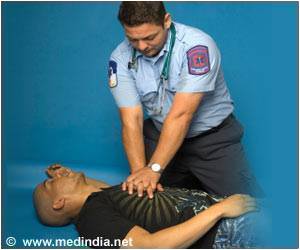
‘By placing an accelerometer on the patient's chest, the depth and frequency at which the compressions are being performed can be measured. These devices can guide the rescuer to help him/her achieve the target depth and frequency of the compression.’
Tweet it Now
"It is essential to perform CPR properly for the manoeuvre to be effective, and that is not easy even for highly trained personnel, since the chest has to be compressed at the appropriate frequency and depth (between 100-120 compressions per minute and between 5 and 6 cm)," explained Digna María González-Otero, author of the work.The quality of the compressions is related to the patient's survival. That is why the resuscitation guidelines recommend the use of feedback systems to monitor the quality of CPR in real time. "These devices are usually placed between the patient's chest and the rescuer's hands and guide the rescuer to help him/her achieve the target depth and frequency of the compression," pointed out the UPV/EHU researcher.
So, researchers in the UPV/EHU's Signal and Communications Group have developed an algorithm to calculate the depth and frequency of the compressions on the basis of chest acceleration.
"In other words," said González-Otero, "just by placing an accelerometer on the patient's chest we can measure, in real time, the depth and frequency at which the compressions are being performed, and then correct the rescuer if necessary so that he/she performs quality CPR".
On sale shortly
Advertisement
In view of the results obtained, the company Bexen Cardio, located in the Basque town of Ermua, is starting to market a device to assist the CPR used by this algorithm. It is a flexible, very thin device resembling a cushion.
Advertisement
"We could say that it is a straightforward, intuitive accessory for the defibrillator and which is geared, above all, towards the emergency services," she added. In fact, "some emergency services are already using it to validate its use in actual patients, to see whether it works as expected, whether it is convenient for the rescuer, whether it meets expectations, etc.", Pointed out González-Otero. Bearing in mind the results being achieved, its mass marketing is expected to take place within a few months.
Source-Eurekalert










